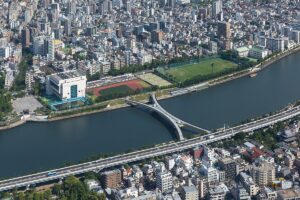Overview (history, characteristics, attractions)
Toji Temple (Kyoogokokuji Temple) is one of the ancient temples founded when the capital was moved to Heian-kyo (794), and is the main training center of the Shingon sect, where Kobo Daishi (Kukai) established the temple. The five-story pagoda is a Kyoto landmark and is known as the tallest wooden five-story pagoda in Japan. The temple grounds are home to many Buddhist statues, sutras, and esoteric Buddhist art that have been designated national treasures and important cultural properties. The temple is also famous for its seasonal garden scenery and the "Kobo-san (antiques market)" held on the 21st of every month. In 1994, it was registered as a World Heritage Site as part of the "Cultural Monuments of Ancient Kyoto."
Highlights
– Five-story pagoda: Its impressive exterior is a symbol of Kyoto's landscape. It is sometimes lit up at night (for a limited time).
- Main Hall (Kondo) and Lecture Hall: These halls often house Buddhist statues of national treasure class, such as the principal image of esoteric Buddhism and standing statues, and you can experience their grandeur by visiting the interior.
– Treasure House (Toji Museum): Exhibits precious collections such as sutras, mandalas, and Buddhist statues. Special exhibitions and planned exhibitions are held regularly.
- Koboichi (antique market): Held on the 21st of every month in and around the temple grounds. A variety of stalls selling antiques, curios, food and drink are lined up, and the market is bustling with locals and tourists alike.
- Four Seasons Garden: Enjoy the seasonal scenery of cherry blossoms in spring, lush greenery in summer, and autumn leaves in autumn. There are also many photo spots.
Access (nearest station, transportation, etc.)
- Nearest station: About a 2-3 minute walk from Kintetsu Toji Station (Kintetsu Kyoto Line). From JR Kyoto Station, it is about a 10-15 minute walk (about 1 km) from the south exit.
- City bus: Kyoto City Bus "Toji" or "Toji East Gate Front" bus stops are available. Please check in advance as the stop names vary depending on the route.
- By car: Paid parking is available in the area. However, it tends to fill up on busy days (such as during the Kobo Market or peak tourist season), so it is more convenient to use public transportation.
Estimated stay (estimated time required)
– Walking around the temple grounds only: 30 minutes to 1 hour
– Visit to the main hall and lecture hall + treasure museum: 1-2 hours
– If you include participation in the Kobo Market and leisurely photography: 2 hours or more
Considering the combination of sightseeing spots (Kyoto Station, Tofukuji Temple, Fushimi Inari Shrine, etc.), the location makes it easy to incorporate into a half-day itinerary.
Nearby spots
– Around Kyoto Station: Shopping, Kyoto Tower, station building facilities
- Tofukuji Temple: Famous for its autumn leaves (easy access by car or train)
– Sanjusangendo (Rengeoin): Known for its national treasure-class Thousand-Armed Kannon statue (accessible on foot or by bus)
- Fushimi Inari Taisha Shrine: Within train distance (a little far away)
– Kyoto Railway Museum: Popular with families, accessible by foot or bus
Things to be aware of (crowds, manners, seasonal precautions, etc.)
- Visiting hours and fees: The main hall and treasure hall have set visiting hours and admission fees. These may change due to special exhibitions or changing exhibits, so please check the official website for the latest information.
- Photography: While photography is generally permitted in outdoor buildings, photography may be prohibited inside temples or exhibits. Please follow the instructions of the staff and signs inside the temples.
- Manners: This is a Buddhist temple. Please observe basic etiquette, such as remaining quiet, not touching Buddhist statues, and not eating or drinking in areas where eating or drinking is prohibited. If there is a place to take off your shoes, follow the instructions.
- Crowds: Kobo Market is very crowded on the 21st of every month. There are many people from early morning to the afternoon, and the passageways become narrow, so please be careful of your belongings and your footing. The number of tourists also increases during the cherry blossom and autumn foliage seasons and during long weekends.
- Payment: Many shops at Kobo Market and small street stalls only accept cash, and credit cards may not be accepted. It will be easier if you have coins on hand.
- Weather precautions: As you will be walking outdoors a lot, be sure to take precautions against heatstroke in the summer and cold weather in the winter. It is also a good idea to bring rain gear.
(Note) Official information, the latest viewing conditions, special opening information, and event dates are subject to change. We recommend checking the latest information on Toji Temple's official website or tourist information before visiting.



